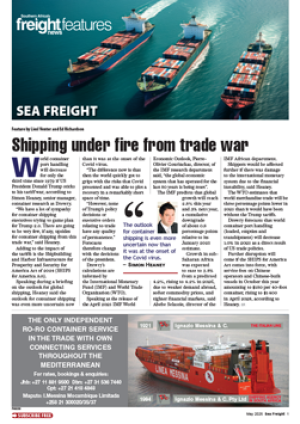Cape Town-headquartered logistics technology firm CtrlFleet has introduced two innovative modules to tackle consolidation. The new features – order grouping and staging of orders – directly address the operational headaches associated with managing breakbulk and multi-client loads.“With looming trade imbalances and ongoing tariff wars, traditional full-load transport operators are increasingly being pushed into handling breakbulk freight,” said Renko Bergh, co-founder of CtrlFleet. “This comes with a host of complications, from managing multiple client orders on a single truck to cross-docking at key transit points and accurately allocating revenue across a managed f leet using several vehicles.”The company’s latest functionality not only simplifies this process but also retains the familiar ease of use CtrlFleet is known for. A drag-and-drop interface now enables users to consolidate similar delivery points effortlessly, while a visual cue clearly indicates grouped orders – all within the intuitive transport schedule page. The vehicle swimlane view remains uncluttered and user-friendly, whether managing a single collection or a complex, multi-stop route.Additionally, the company has developed a new staging capability that enables the preplanning of partial deliveries within a single order. These staged deliveries – removable from a vehicle with or without the trailer – can then be rescheduled or linked to other orders, providing a streamlined approach to cross-docking and improved f lexibility in freight planning.According to Bergh, freight consolidation services have become an increasingly viable and accessible option for businesses of all sizes to combat supply chain risks.“Gone are the days when lacking large pallet quantities or high shipping volumes left emerging brands on the outside,” said Bergh. “With freight now being consolidated across multiple companies, the carrier becomes responsible for the entire combined shipment. This significantly complicates the docking and loading process and adds a mountain of documentation. For truck drivers, collecting and managing the correct paperwork at each delivery point within a consolidated order has become both time-consuming and complex. What was once considered a trend or a passing fad has now become a necessity – driver applications are essential tools for truck operators in today’s logistics environment.”He said driver applications were no longer just a trend but rather an operational necessity, drastically reducing complexity on the ground.The pressure on supply chains is further intensified by growing customer expectations. “Customersare more willing to pay a premium for quicker delivery,” said Bergh. “To make this happen, retailers need a more visible supply chain supported by technology and real-time data. Tracking products is crucial – not only to maximise storage space but also to ensure speed and accuracy during consolidation. The ability of the supply chain to offer instant visibility of product movement is no longer optional – it’s top of mind. That’s why selecting technology that enables true track-and-trace capabilities, particularly for transporters managing complex consolidated loads, is more important than ever.” LV

